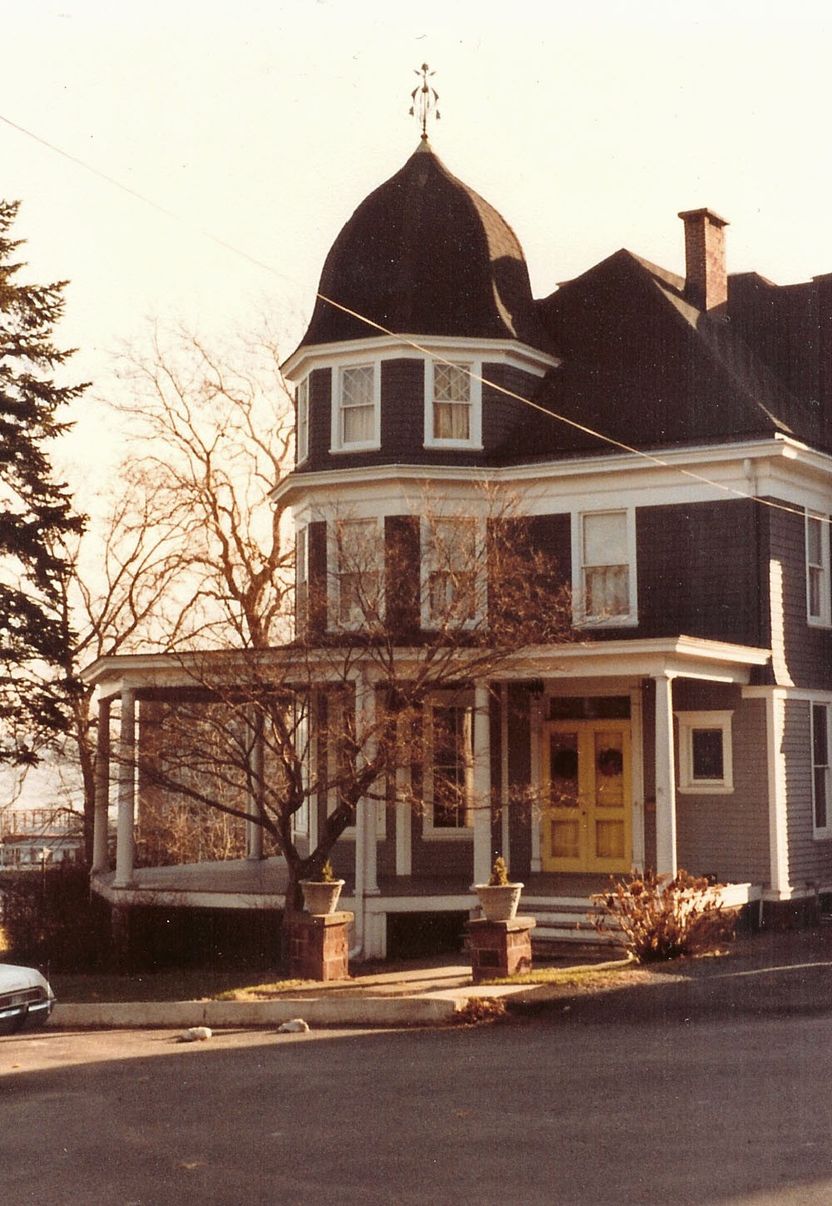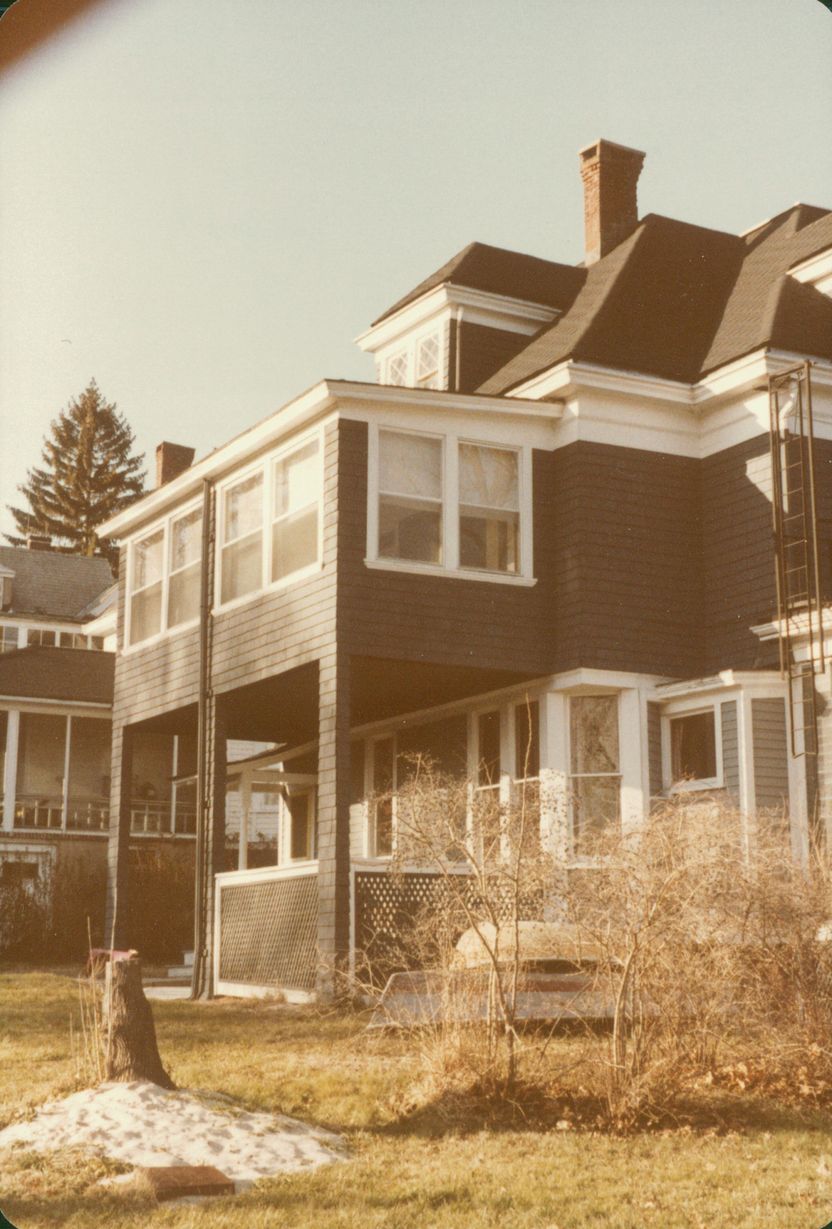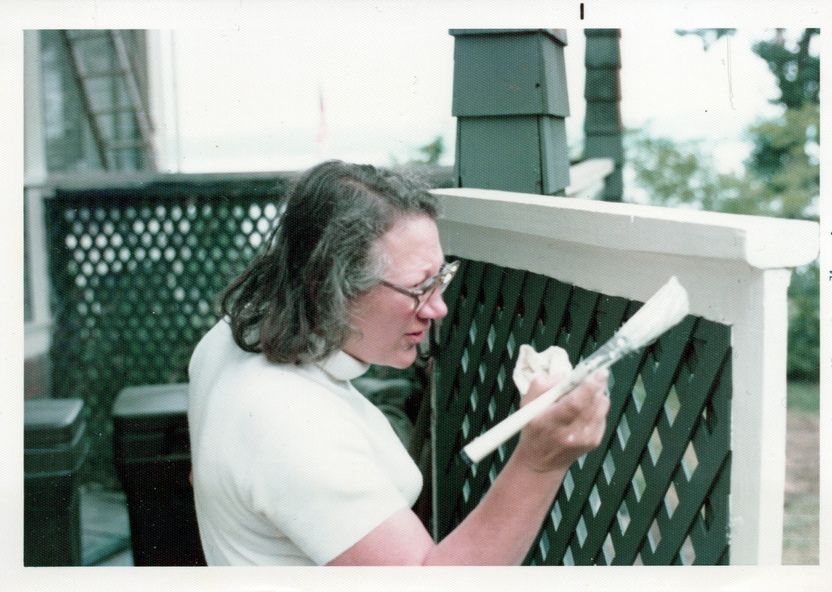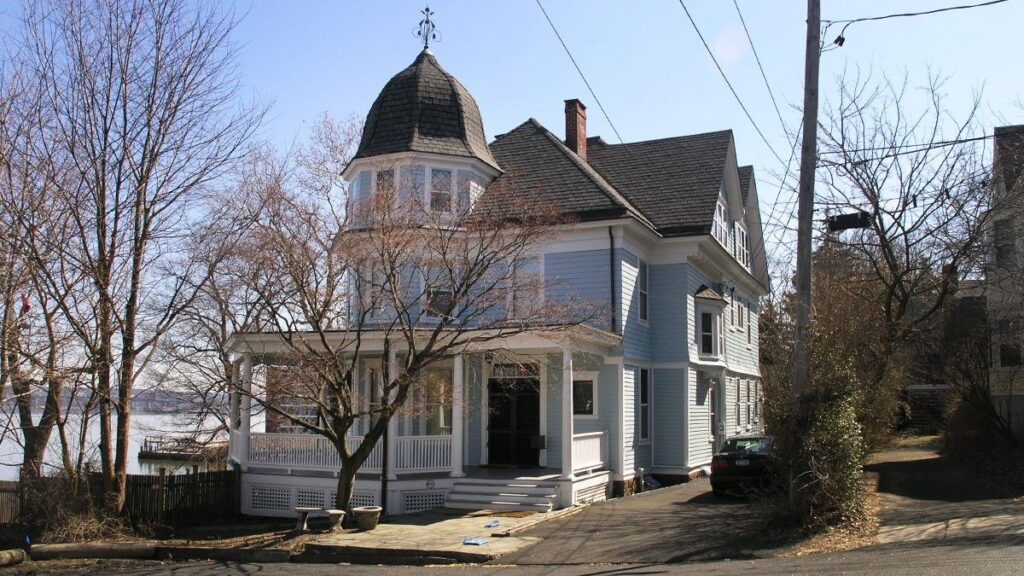
Courtesy of Mark Kavanagh Collection
Cynthia Ackley Kavanagh recalls sitting on her bed in her new home when the cord to the light above began swinging in a way that she had never seen before. It wasn’t sloping in an arc as it should. Instead, it was as if some invisible force were playing pingpong with the pull switch.
The year was 1967. Her father had gotten a job in New York City, and the family had recently traded their Maryland farm for a derelict Victorian just north of New York City. Her parents, Helen and George Ackley, were determined to restore the run-down, 4,200-square-foot house on the Hudson River, where they planned to raise their four children.
Built in 1890, the house in Nyack had sat vacant for seven years before the Ackleys bought it. During that time, neighborhood children would say they saw faces in the windows.
Over their two decades in the home, the Ackleys would have many inexplicable experiences. They heard mysterious footsteps and voices. Doors and windows would fly open. On several occasions, they claimed, they even received visits from peaceful spirits wearing clothes from centuries past. The paranormal was just part and parcel of their new home.

Courtesy of Mark Kavanagh Collection
The old Victorian would eventually achieve infamy in the early 1990s after the Ackleys put it on the market. When the buyers learned of the home’s supernatural history, they tried to back out of the deal. To recover their deposit, they sued. And the court, for the first time, established that a property was haunted in a published opinion.
That opinion, colloquially referred to as the “Ghostbusters ruling,” established the Ackley residence as the only known legally haunted house in America.
The case has since been taught in law schools across the country. And while disclosure laws vary greatly by state, the case did create something of a common-sense precedent for what sellers must disclose to buyers.
The Nyack home itself has changed hands several times since the ruling, including to some celebrity owners attracted to its notoriety. However, not a single one has publicly reported a paranormal experience.
But the questions, and the mysteries, remain: Is America’s only legally haunted home really haunted?
‘Is there any way we can take our otherworldly friends with us?’

Courtesy of Mark Kavanagh Collection
Kavanagh, now 70, is a believer. She lived in the home during high school, briefly after she was married, and again when she was widowed.
On her first holiday break in the house, she tells Realtor.com®, she was awakened by her bed being shaken. The next morning it happened again.
“It wasn’t violent,” Kavanagh recalls. “It was really gentle, like someone was shaking you awake, like, ‘Come on, you’ll be late to school.’”
So the next night before she went to sleep, she announced loudly to the room that she was on her Christmas break and didn’t have to go to school in the morning, Kavanagh adds. After that, the spirits allowed her to sleep in.
A few years later, she met one of the other “residents” of the home. She walked into her bedroom late one night and saw a woman in white sitting on her bed. The apparition was looking in the mirror as she combed her blond hair. Kavanagh remembers politely excusing herself and going downstairs for about a half-hour. When she returned, the woman was gone.
Kavanagh says she even received some gifts from the ghosts.
When Kavanagh’s oldest daughter was baptized, Helen Ackley had to tie a gold ring onto the baby’s finger because it was too big for her. When the family returned to the house after the ceremony, they found a small ring on the dresser. It fit the baby’s finger perfectly. Her daughter, now grown, still wears that ring around her neck.
“We had plenty of ghost sightings,” says Kavanagh, who now lives in Salem, OR, with her husband. “None of us ever felt afraid of anything that went on.”
Her mother penned an article for Reader’s Digest in 1977. In it, Helen shared the family’s experiences in the home.
She wrote about seeing a male ghost floating in the air, smiling at her while she painted the living room. He was dressed in a blue suit with ruffles at the throat and wrists, short pants that stopped at his kneecaps, and black shoes with buckles.
“We have come to savor these happenings. They give a sense of the continuity of the past with the present and with the future,” Helen wrote. “These elusive spirits seem gracious, thoughtful—only occasionally frightening—and thoroughly entertaining. Now we wonder: if the time comes for us to move again, is there any way we can take our otherworldly friends with us?”
How the Victorian became the nation’s first legally haunted home

Courtesy of Mark Kavanagh Collection
If only she had been able to take her otherworldly friends with her, Helen might have avoided the legal trouble that followed.
By 1989, she was widowed and owned another home in Florida. It was time to sell the Victorian she had lovingly restored. The buyers were Wall Street trader Jeffrey Stambovsky and his wife, Patrice Stambovsky, who were moving to Nyack from New York City. Their offer was accepted, and they made a down payment of $32,500.
The problem was that Helen had apparently told everyone but the Stambovskys about her home’s haunted history.
Following Helen’s article in Reader’s Digest—at the time, one of the nation’s most popular magazines—the house was written up in the local newspaper a few times and even included on a haunted walking tour of the town. It was a popular topic of conversation in the town.
But none of this was apparently disclosed to the buyers before they closed the deal. And when they discovered the stories about paranormal activity in their new home, they were neither charmed nor thrilled. They tried to break their contract, but Helen refused. So they sued to get their deposit back.
The Stambovsky v. Ackley case hinged on the homeowner “advertising” the supernatural activity, but not to the buyers. The judge ruled the buyers wouldn’t have been expected to know the home was haunted as they weren’t locals. It didn’t matter if the home was actually haunted. What mattered was that people believed it was, thanks to Helen. So she had a duty to disclose that information to prospective buyers.
Helen is now deceased, and Kavanagh has a different version of events.
Her mother had sworn to her that she mentioned the ghosts would love having children in the house again in front of a pregnant Patrice Stambovsky. Helen also maintained that the Stambovskys were trying to get a deep discount on the home, which she had flatly refused.
It didn’t make much of a difference to the court, though.
The “seller deliberately fostered the public belief that her home was possessed,” the 1991 ruling read. “Having undertaken to inform the public-at-large, to whom she has no legal relationship, about the supernatural occurrences on her property, she may be said to owe no less a duty to her contract vendee.”
Today, New York is one of only four states that include supernatural activity in their real estate disclosure laws. The others are New Jersey, Massachusetts, and Minnesota, each with different requirements. Several other states require sellers to tell buyers if there was a death on the property. These laws vary greatly, but there are a few rules of thumb.
In most of the country, sellers don’t need to disclose ghosts “unless you’re bragging about it,” says law professor Christopher Trudeau, of the University of Detroit Mercy School of Law, who has taught classes on real estate law. “If you’re telling other people it’s haunted, you have a duty to tell the person who’s buying it.”
And if a buyer asks outright about paranormal activity in a home, sellers should answer truthfully, Trudeau says. It’s similar to disclosing the last time the roof was replaced or whether the home has ever flooded.
“If they lie … that’s a basis for a lawsuit,” says Trudeau. “If you’re trying to hoodwink somebody, the court will try to figure out a way to make things right.”
So is this legally haunted home really haunted?

Courtesy of Mark Kavanagh Collection
The ruling hasn’t discouraged high-profile buyers from living in the legally haunted home.
Adam Brooks, who wrote and directed the film “Definitely, Maybe,” bought the property from Helen. He reportedly never had any paranormal encounters during his roughly two decades there.
In 2012, he sold the home for $1,725,000 to pop singer Ingrid Michaelson. The “Way I Am” singer told the New York Post it was “a magical home” with an “unbeatable” view.
Nancy Blaker Weber, who was the real estate agent for this transaction and subsequent sales of the home, says Michaelson got a kick out of the ghost stories.
“There must be a fun element of owning the only legally haunted house,” Weber, of Howard Hanna Rand Realty, says. “There’s a certain type of person who’s attracted to that kind of thing.”
About three years later, singer and rapper Matisyahu, of “King Without a Crown” fame, purchased the home for $1.77 million. He apparently did not experience any poltergeists either.
The home was last sold in March 2021 for $1,795,000. The new owners, who are also in the creative field, are renovating the home, says Weber. The five-bedroom, 4.5-bathroom home was valued at $1,864,000 earlier this week, according to Realtor.com data.
“I’ve logged a lot of time in that house through the years, and I’ve never felt anything unsettling. If there’s anything there, it must be friendly,” Weber says.
The post Is America’s Only Legally Haunted House Actually Haunted? appeared first on Real Estate News & Insights | realtor.com®.
